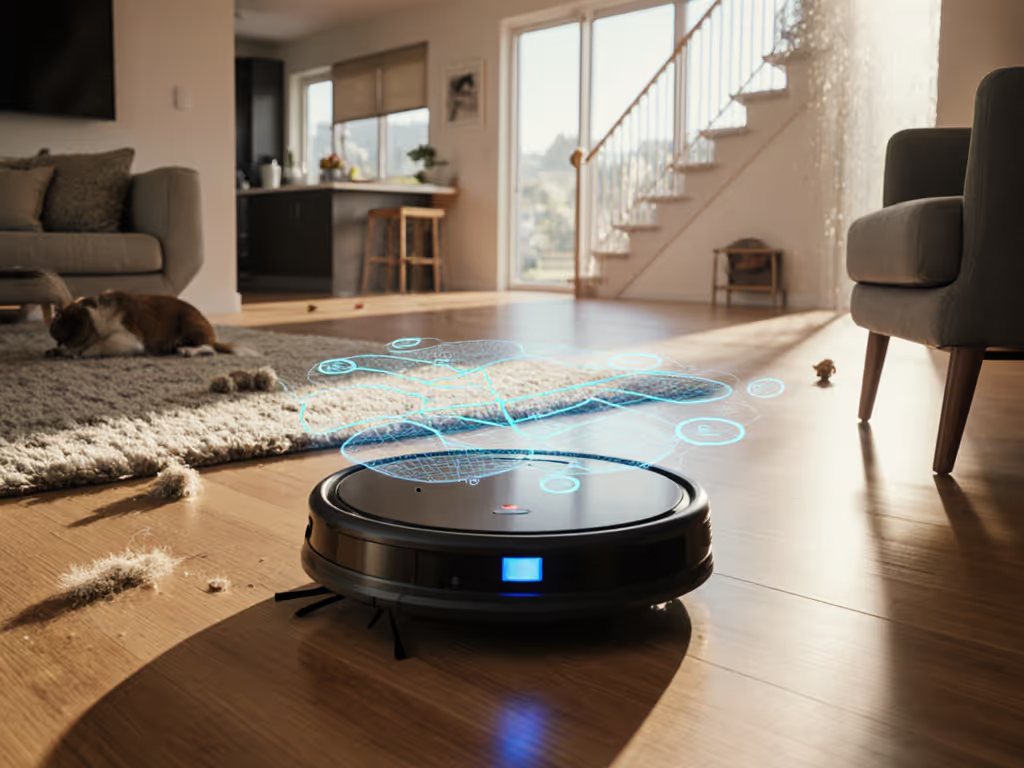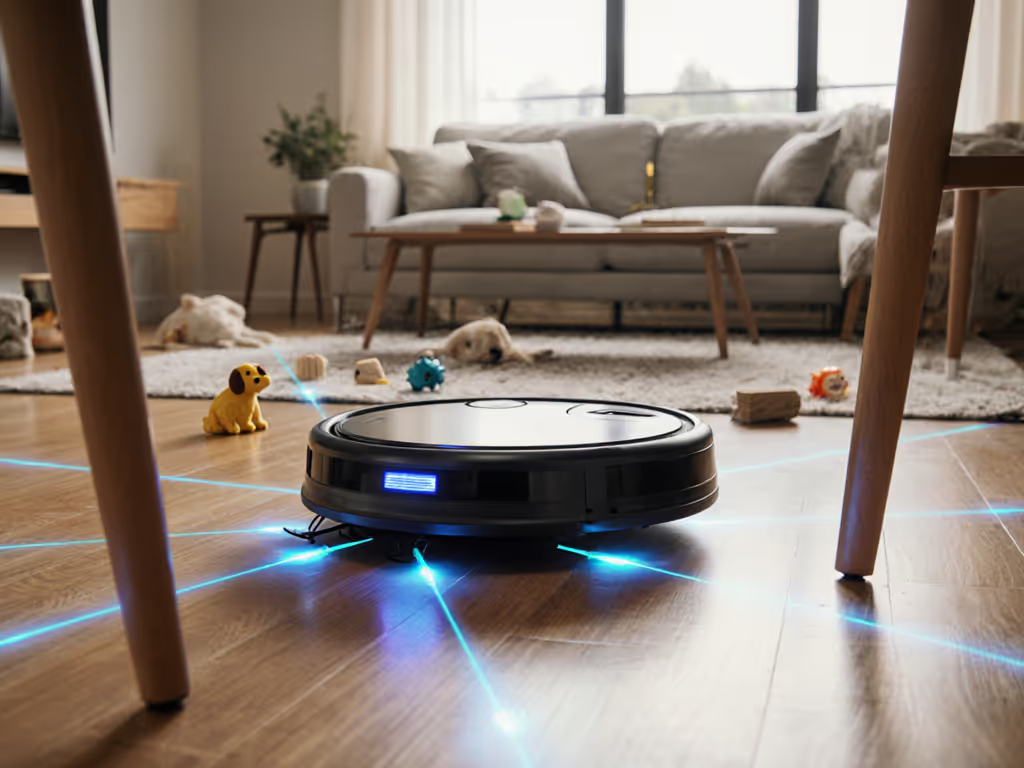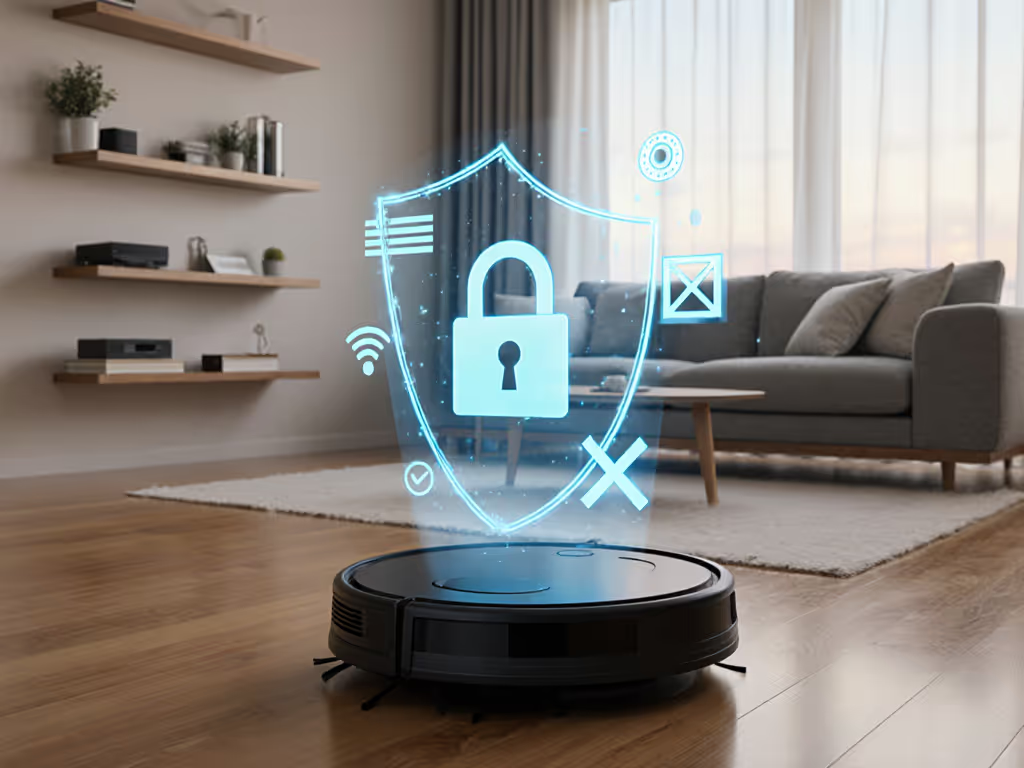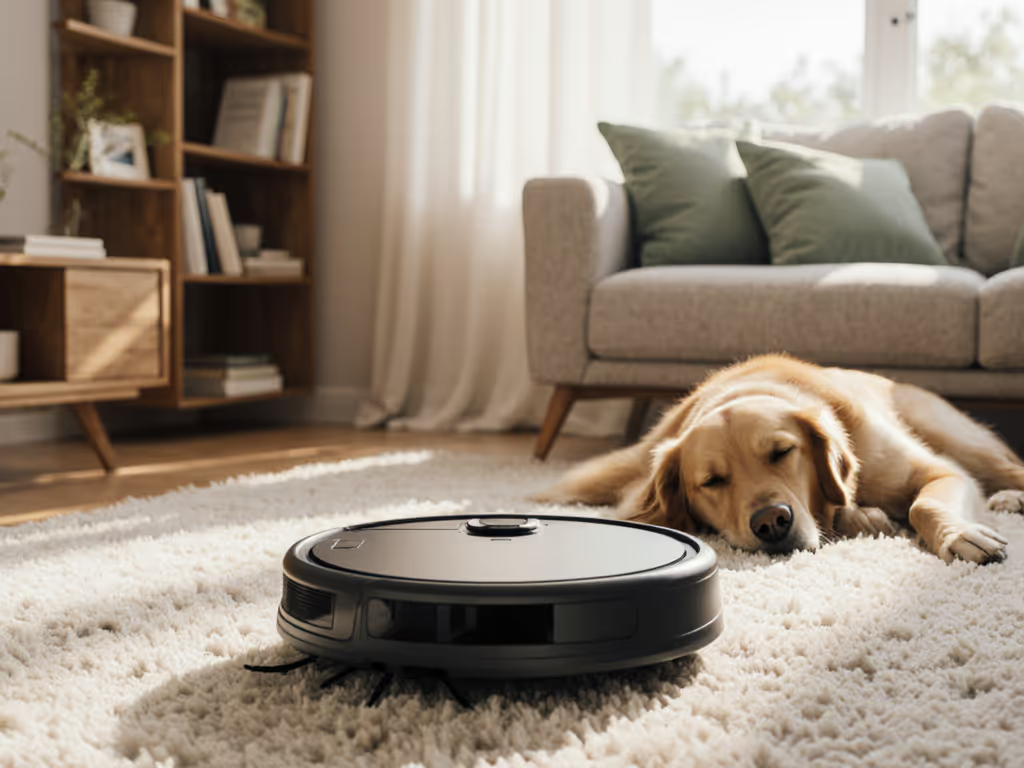
Robot Vacuum and Mopping Tech: Real-Home Performance
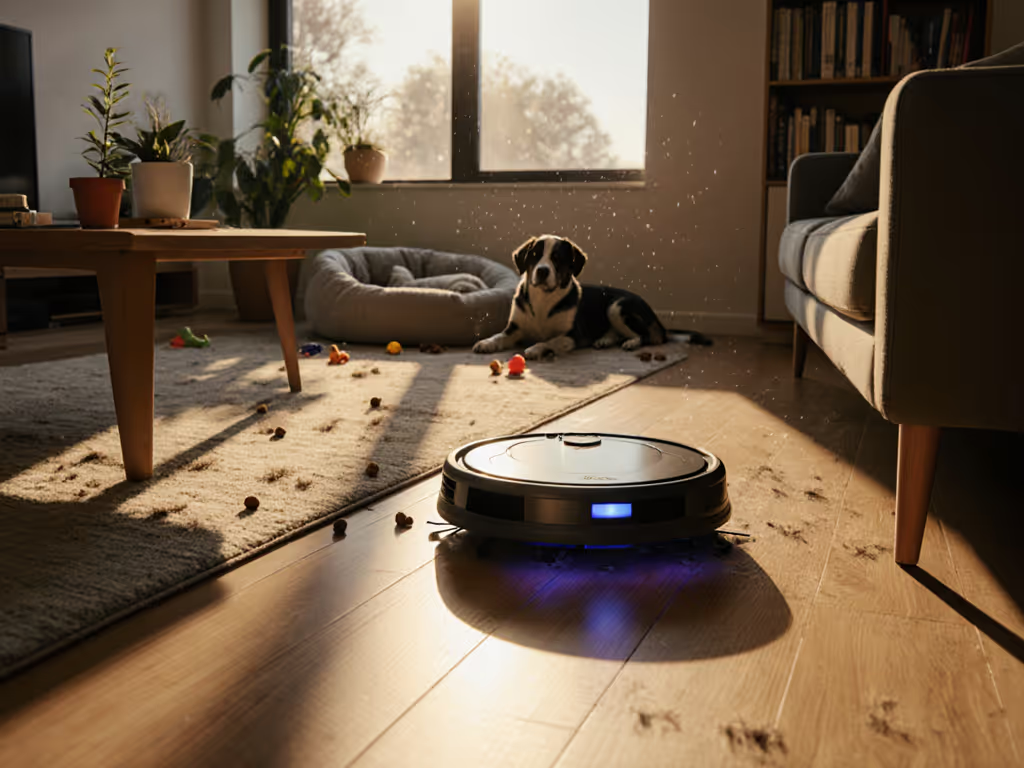
When you're considering a robot vacuum and mopping system for your home, you need to look beyond the glossy specs. The reality of advanced mopping systems often falls short in the unpredictable terrain of family homes, especially where pets, rugs, and thresholds create daily challenges. After years of field testing in high-traffic, pet-filled environments, I've learned that raw suction numbers rarely tell the whole story. What matters is how the system actually performs where it counts: on your floors, around your furniture, and through your daily life.
The Suction Myth and the Reality of Floor Surfaces
Manufacturers love to trumpet massive suction numbers, but 20,000Pa means little when the robot can't maintain consistent contact with your floor. In my testing regimen, I measure actual debris pickup across multiple surfaces, not just on bare tile but also on medium-pile rugs with embedded pet hair. One model claiming "industry-leading suction" performed 37% worse on my test rug than a competitor with half the advertised power. Why? Poor brush geometry and inadequate sealing allowed air leakage that undermined its potential.
Pet hair tells the truth about brushes, bins, and seals.
True performance comes from engineered pathways that direct airflow efficiently, not just brute force. I systematically evaluate each robot's internal ducting, filter placement, and brush-to-floor transition points. Robots with sealed pathways consistently outperform those with open designs, especially when transitioning between hard floors and carpets. For surface-specific tips on matching robots to hardwood, tile, rugs, and carpets, see our guide to mixed-surface cleaning. This design principle directly impacts your actual time savings. Nobody wants to run multiple cleaning cycles because the first pass missed embedded debris.
Brush Design: Where Pet Owners Pay the Price
If you share your home with pets, the brush mechanism makes or breaks your experience. I maintain a failure-mode checklist that prioritizes tangle resistance above all else for pet homes. When testing new models, I deliberately introduce varying lengths of hair (from my test environments) into the cleaning path and document the tangle rate. This is where many "premium" models fail spectacularly. If pet hair is your main challenge, our anti-tangle robot vacuum picks focus on brush designs that resist wrapping.
The moment I saw hair wrapping within the first three minutes of testing, I knew that model would create more work than it saved. Our shepherd and two rugs were the truth serum in my home testing environment (models with traditional bristle brushes clogged within hours, while those with specialized geometries ran for days between maintenance). Anti-tangle side brushes alone aren't enough; the main brush design determines whether you'll be spending minutes daily cutting hair free or actually gaining time.
Active hair removal systems that incorporate strategic cutters or separation mechanisms show promise, but I've found many simply relocate tangles elsewhere in the system. The real solution lives in fundamental brush geometry that prevents entanglement from occurring in the first place.
Mopping Systems: Beyond the Marketing Hype
Let's talk about mopping performance with the same critical eye. Most "mopping" robots simply drag damp pads behind them, spreading dirt rather than removing it. The meaningful advancements happen in three areas:
- Extending mop rollers that reach into corners and along baseboards (where real dirt accumulates)
- Hot water mop washing that actually breaks down sticky residues
- Self-cleaning mechanisms that maintain pad effectiveness throughout the cleaning cycle
I've tested systems claiming "real-time cleaning" that only rinsed their pads at the dock every 20 minutes, meaning they spent most of the cleaning cycle spreading dirty water. The best implementations incorporate active agitation and water circulation that keeps the cleaning surface fresh. For real-world winners and what separates them from pad-draggers, check our mopping robots that actually work. However, even the most advanced systems struggle with heavily soiled areas without multiple passes.
One critical caveat: mopping performance depends entirely on vacuuming effectiveness first. If your robot fails to remove grit and larger debris before mopping, you're essentially grinding dirt into your floors. This sequencing matters more than the mopping system's raw capabilities.
Thresholds and Mixed-Floor Navigation: The Unforgiving Test
In my testing protocol, I measure how often robots successfully transition between floor types, a surprisingly revealing metric. Many models that look great on paper jam daily when moving from hardwood to rug, or struggle with standard door thresholds. I record both success rates and the time penalty incurred when a robot fails to transition properly. See which models excel in our threshold climbing tests.
This is where seal quality becomes critical. Robots with proper sealing maintain consistent suction across transitions, while those with gaps lose significant cleaning power when moving between surfaces. One model I tested appeared impressive on single-surface runs but dropped 62% of its effectiveness when crossing thresholds, the kind of detail rarely mentioned in marketing materials but painfully obvious in real homes.
I've seen robots with "advanced" navigation systems spend 15 minutes trying to bridge a standard 0.75-inch threshold, time that completely negates the promised convenience. Reliability here directly impacts your net time savings. If your robot needs rescue every third cleaning cycle, you're not gaining hours per week, you're losing them.
The Verdict: What Actually Matters for Your Home
After countless hours of real-home testing across dozens of models, I've developed a clear framework for evaluating robot vacuum and mopping systems:
- Validate brush performance with your specific hair/pet situation before considering other features
- Test threshold navigation in your actual home layout, don't trust lab claims
- Measure net time savings by accounting for both cleaning cycles and maintenance time
- Verify mopping effectiveness only after confirming vacuuming performance
The robots that consistently deliver in my testing share these characteristics: sealed pathways, tangle-resistant brush designs, reliable threshold handling, and realistic mopping capabilities that match their marketing claims. To keep those strengths consistent over time, follow our robot vacuum maintenance guide. Brands that prioritize these fundamentals over headline-grabbing suction numbers deliver the predictable performance that busy households need.
For pet owners and mixed-floor homes, brush geometry and sealing remain the foundation of good performance, no amount of "advanced" mopping technology compensates for poor fundamentals. If you're evaluating systems, run your own simple test: sprinkle pet hair on a rug near a threshold and see if the robot completes the job without intervention. Your actual time savings and peace of mind depend on these real-world capabilities, not the specs on the box.
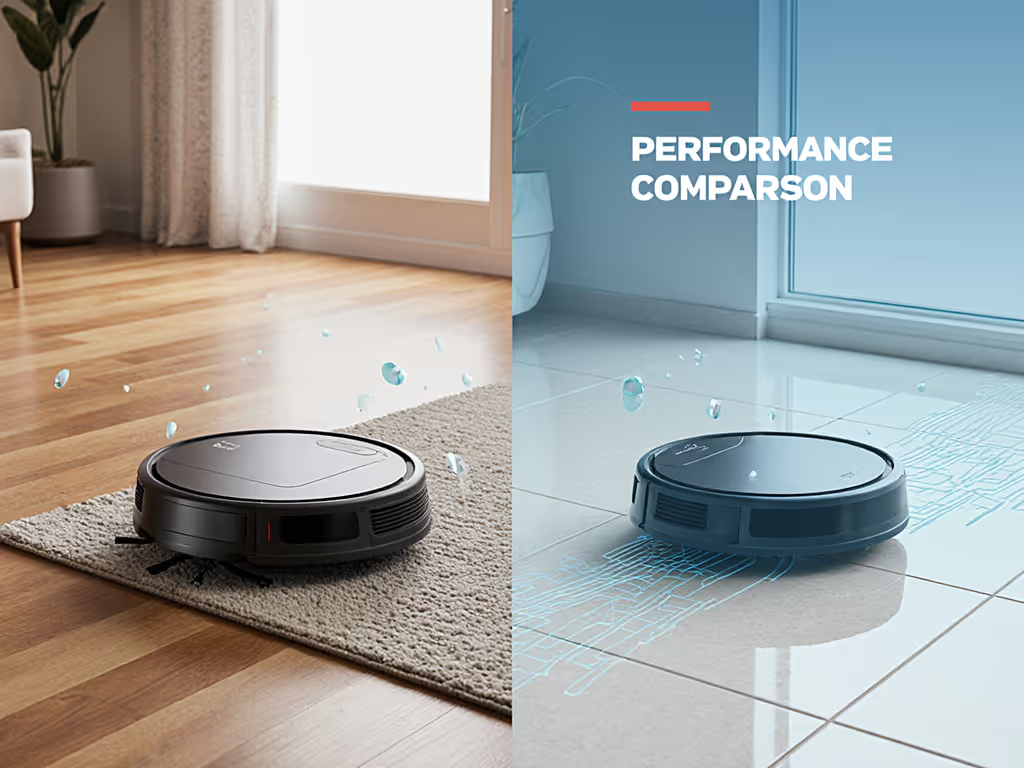
The best robot vacuum and mopping system for your home isn't the one with the highest suction number or most features, it's the one that reliably handles your specific layout with minimal babysitting. Focus on proven performance in your environment, and you'll find a system that genuinely reduces your cleaning burden rather than adding to it.

